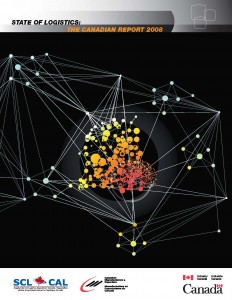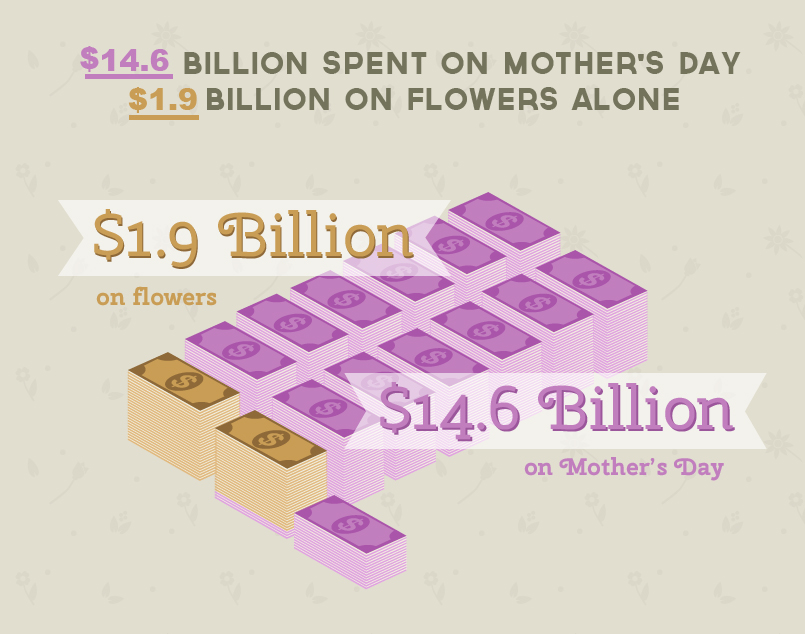What is the Internet of Things and How Does it Relate to Supply Chain?
https://morailogistics.com/what-is-the-internet-of-things-and-how-does-it-relate-to-supply-chain/
We have been seeing a lot of posts these days on the Internet of Things (IoT) from industry professionals in supply chain and logistics. This week we thought we would focus on defining the IoT for those that may be unaware and shed light onto how it applies to the logistics and supply chain industry.
The Internet of Things
The Internet of Things (IoT) is a term that was can be traced as far back as 1832 with the invention of the first electromagnetic telegraph all the way to today. The term itself though, wasn’t coined until 1999 by Kevin Ashton from the Auto ID Centre:
I could be wrong, but I’m fairly sure the phrase “Internet of Things” started life as the title of a presentation I made at Procter & Gamble (P&G) in 1999. Linking the new idea of RFID in P&G’s supply chain to the then-red-hot topic of the Internet was more than just a good way to get executive attention. It summed up an important insight—one that 10 years later, after the Internet of Things has become the title of everything from an article in Scientific American to the name of a European Union conference, is still often misunderstood.
Source:RFID Journal
Postscapes has a great overview of the history of the IoT which can be found here. But to define the IoT:
Internet of Things
Definition: The Internet of things is defined as a proposer development of the Internet where everyday objects (i.e. devices) have a form of network connectivity (e.g. Wifi, Bluetooth, etc.) that allow them to send and receive data.
How Does this Relate to Logistics and Supply Chain?
Logistics Viewpoints recently released a blog post on how the IoT will change the face of supply chain management. Essentially, the theory is that operations along the supply chain can be made more efficient by combining technology like smart sensors, cameras, software, databases, etc. with the Internet in diverse ways to optimize the supply chain.
Currently, the IoT is slotted to be present all along the supply chain, from people who will have badges monitors the health of workers in hazardous environments, smartphone apps that detect traffic conditions, to sensors on cargo/shipments that help supply chain planners direct where goods will flow.
Steve Banker of Logistics Viewpoints emphasizes that in order to properly change and accommodate to the advances in applying IoT elements into logistics requires a change in analytics first:
“Collecting, storing and analyzing IoT data requires different processes, skills and technologies.” Acquiring those technologies and ‘growing’ the associated talent will become a key task for companies that want to use IoT to take their supply chain programs to the next level.
Source:Logistics Viewpoints
That’s it for us this week! If you liked this blog post, why not subscribe to our blog? If you’re interested in what we do as a 3rd party logistics provider, don’t hesitate to check out our services (as expressed above, we are very pro finding you the lowest total cost!). We’re also in the twittersphere, so give us a follow to get the latest logistics and supply chain news!
Industry Focus Week: Logistics Learning and Gaming
https://morailogistics.com/industry-focus-week-logistics-learning-and-gaming/
We have already predicted that there will be challenges when attracting the new generation, i.e. Generation Y or the Millenials, to the concept of logistics and supply chain. What better way to influence the move to educate, and more importantly motivate than to make learning about logistics more fun and engaging through play?
On this Industry Focus Week post, we’re going to be exploring different ways gaming and play have been incorporated into the world of logistics and supply chain learning.
Business on the Move – The Game
Logistics games have existed in the past, but they’re normally meant of the University or other post-secondary/professional education stream. Concepts like the Beer Game have existed for a while, but we’ve still got an untapped market: the youth of today. Millenials are still very unaware that there even are careers in logistics.

In an effort to attract future generations into the concept of logistics, Andy Page and Pat Smedley, two former business studies teaches, sought to educate all ages but with a focus on youth (9-19 years old) behind the concept supply chain and logistics. They set up a social enterprise called Very Enterprising Community Interest Company in 2011 in order to create Business on the Move.
This board game presents the following challenge: How do you (as a player) move different products from China to their UK customers? You are given the options of different modes of tansportation (i.e. the standard land, sea and air). The point of the game is the be the player that can successfully execute the moving of your goods as quickly, as profitably and as responsibly as possible. Or at least better than the other playes!
Players are faced with taking decisions that are surprisingly similar to those made regularly by many businesses when addressing logistics and supply chain challenges. They have to tackle meeting delivery deadline, improving their supply chain (i.e. supply chain optimization), and ultimately: How to profit! And to top it off, Business on the Move also created sustainability initiatives to the game mechanics to address issues like reducing your company’s carbon footprint?
It is no surprise that Business on the Move has already won an award under the Royal Bank of Scotland’s Inspiring Enterprise initiative as well as UnLtd,a charity that supports social entrepreneurs. SHD Logistics writes that to date:
To date, nearly 600 young people, teachers and supply chain professionals have played Business on the Move, with another 15,000 young people projected to play over the next 12 months. Andy and Pat’s vision is that by 2020 over 100,000 people will have played the game.
Our team at Morai Logistics believes that this is a great move and a wonderful step in the right direction for opening up the concept of logistics and supply chain as not just a career option, but a fun and challenging one to boot!
Warehouse and Logistics Simulator
Gamers are now even getting their own simulator! Simulator genre lovers and casual gamers can finally experience a game that outlines the challenges involved in warehouse and supply chain operations.
Published by United Independent Entertainment GmbH (known for other simulator games like Woodcutter Simulator, Airport Simulator, and Towtruck Simulator to name a few) and developed by the team at app2fun, Warehouse and Logistics Simulator puts your in the driver’s seat of a forklift as you scramble to move goods around the warehouse to reach a time-based high score.
While the game itself did not amass great press or review from the official video game reviewers, it is a great start into a realm of possibly excellent thought out logistics related simulation games. This targets a market that logistics has yet to see and we’re excited to hear that developers have launched something like this to begin with. We are definitely keeping an eye out.
That’s it for us this week! If you liked this blog post, why not subscribe to our blog? If you’re interested in what we do as a 3rd party logistics provider, don’t hesitate to check out our services (as expressed above, we are very pro finding you the lowest total cost!). We’re also in the twittersphere, so give us a follow to get the latest logistics and supply chain news!
How Social Media and Mobile Technology is Changing the Face of Supply Chain and Logistics
https://morailogistics.com/how-social-media-and-mobile-technology-is-changing-the-face-of-supply-chain-and-logistics/
We’ve reached a point in society that people’s parents and even in some cases their grandparents are getting social media savvy! It is no surprise then, that these social media developments is something that businesses can no longer ignore; logistics and supply chain industry or otherwise.
This week’s blog post will focus on two case studies that show how both social media application and mobile technology is affecting the logistics and supply chain industry in an interesting way.
Twitter is Making Truckers Healthier
Fronetics released a post this month on how an interesting development on Twitter has trucking companies leveraging social media to both save money and take care of their staff. According to the article, both obesity and sleep disorders (i.e. sleep apnea) are the primary health risks for truckers and end up costing their employers $190.2 billion in medical spending. According to the Journal of Occupational and Environmental Medicine, obese truckers had an annual average total health care cost of $1,944, compared with $1,755 for overweight truckers and $1,131 for normal-weight drivers.
So how does social media come into play? Well, a 42 year old trucker with over 20 years of experience decided to use Twitter as a venue to track his progress to adopt a healthier lifestyle on his journey from being the typical statistic of an unhealthy overweight trucker to a healthier, and happier, trucker.
He started an account as @urbanhauler and, using the hashtag #fittrucker, captured the attention of over 1500 fellow truckers (based on his follower list alone). This spurred Jarred Martin of Speedy Transport to secure a new job opportunity while continuing his quest to change the habits of truckers everywhere.
Google’s Uber Taxi App Expands with UberRush

There is a new face in the traditional parcel deliver services, and logistics companies are taking notes. Uber, a San Francisco based venture focusing on on-demand transportation services best known for their vehicle-for-hire or ridesharing app by the same name has expanded in NYC by launching Rush. Rush, or Uber Rush, extends their ridesharing model to a package delivery service. Uber Rush uses bike and on-foot messengers to get your belongings from origin to destination.
It works by having users request a messenger at your location via the Uber Rush app. A chosen delivery person will then arrive to collect your delivery instructions (via bike or foot), then take your package to your destination. Both the sender and recipient can track the location of the package via the app. How’s that for taking logistics services straight to the masses?
That’s it for us this week! If you liked this blog post, why not subscribe to our blog? If you’re interested in what we do as a 3rd party logistics provider, don’t hesitate to check out our services (as expressed above, we are very pro finding you the lowest total cost!). We’re also in the twittersphere, so give us a follow to get the latest logistics and supply chain news!
Happy Canada Day from the Morai Logistics Team!
https://morailogistics.com/happy-canada-day-from-the-morai-logistics-team/
The Morai Logistics Team wishes you a Happy Canada Day! To celebrate, here’s a link to the (albeit older) resource from our very own Government of Canada’s State Logistics – The Canadian Report:

While you’re already reading our post, why not subscribe to our blog? If you’re interested in what we do as a 3rd party logistics provider, don’t hesitate to check out our services (as expressed above, we are very pro finding you the lowest total cost!). We’re also in the twittersphere, so give us a follow to get the latest logistics and supply chain news!
3 Stats Suggesting Mexico is a Prime Nearshoring Choice for North America
https://morailogistics.com/3-stats-suggesting-mexico-is-a-prime-nearshoring-choice-for-north-america/
In the recent years, China and Mexico have been battling to be the prime hub spot for logistics operations in North America. While there are still advantages of offshoring to China, for example their already established work force and prime manufacturing facilities, when it comes down to it cost and time are the prime factors for the change. We will be discussing the expected advantages for nearshoring as well as present some statistics that support the trend that suggest that nearshoring, especially for companies that are looking to build manufacturing plants, is the better option.
Top 5 Expected advantages of Nearshoring
Inbound Logistics Magazine released and analysis of the status of the logistics and supply chain industry in Latin America. Below is an excerpt of survey respondents based on research by AlixPartners of the top five expected advantages of nearshoring:
- Lower Freight Costs
- Improved Speed-to-Market
- Lower Inventory Costs
- Time-Zone Advantages
- Improved Cultural Alignment with North American Managers
Nearshoring is becoming more and more attractive as geopolitical changes, and factors such as rising fuel costs, have been affecting the main attraction for China: lower total cost for logistics operations. By 2015, China’s wages are expected to rise to $6 USD, and by this point it will no longer be cheaper than Mexico’s flat wages.
3 Statistics on Mexico as an Advantageous Nearshoring Move
Statistics since our initial post on our case study exploring Mexico as a prime logistics hub has shown that the trend to nearshore is not just very real, but also becoming more and more attractive. Logistics Management’s report exploring how US manufacturing costs are now equal to Mexico and how costs will be equal to China by 2015 seem to be confirmed as we near 2015. The following are statistics that we found that further solidify this trend:
1 – The full landed cost of Chinese production rose from 2005-2010 to 87% of US costs, while Mexican costs fell to 75% of US costs.
Source: Lilly and Associates
2 – Ocean freight from Altamira, Mexico to the port of Miami takes 6 days while a similar shipment from China can take up to a month to arrive.
Source: Lilly and Associates
3 – China’s fuel costs grew at approximately 20 percent per year in the past few years.
Source: Supply Chain Brain
China has some challenges to compete with the attraction of nearshoring to Mexico, and indeed efforts are being taken in order to control the rising fuel costs and the new minimum wage standards in order to remain a strong competitor as an offshoring option for North America. But the concept of nearshoring is now not just a real avenue of exploration, it simply cannot be ignored for those in the North American logistics and supply chain industry.
If you’re interested in finding out more Mexico as a solution for your logistics and supply chain needs, check out our white paper on Mexico and Third Party Logistics!
That’s it for us this week! If you liked this blog post, why not subscribe to our blog? If you’re interested in what we do as a 3rd party logistics provider, don’t hesitate to check out our services (as expressed above, we are very pro finding you the lowest total cost!). We’re also in the twittersphere, so give us a follow to get the latest logistics and supply chain news!
Logistics Glossary Week for May 2014
https://morailogistics.com/logistics-glossary-week-for-may-2014/
This Logistics Glossary Post is going to focusing on order fulfillment in the supply chain. In the logistics industry, we look at order fulfillment as a way to de-couple the supply chain and is especially important for companies that either offer product customization and/or have a variety of different products to offer. Looking at order fulfillment to minimize the amount of steps take along the supply chain and mitigate the impact of variety both on cost and time to produce.
Order Fulfillment
Hal Mather published a book called Competitive Manufacturing and pioneered the research behind order fulfillment. He was also responsible for defining the order fulfillment strategies that we are defining below:
Engineer-to-Order (ETO)
Definition: Engineer-to-Order refers to products that are designed and built to customer specifications. For example if I wanted a custom car built from scratch, a company that specializes in that service would have an engineer-to-order car. Companies that use this approach usually large construction projects or companies that offer one-off products such as the example above.
Build-to-Order (BTO)
Definition: Build-to-Order, also known as Make-to-Order (MTO), refers to products that have a standardized built. This means that the basic build of the product is the same throughout, but the production of components and the manufacturing of the final product is linked to the order placed by the final customer’s specifications. This is usually seen in the automotive industry, where customers can customize certain aspects of the car model that they have chosen to purchase (i.e. colour, type of interior, etc.).
Assemble-to-Order (ATO)
Definition: Assemble-to-Order products are built to customer specifications based on a list of items (i.e. a stock of existing components). This means that the base product itself has the type of architecture to allow the final product to be configured in such a way that the components can fit. The most common place this is seen is in electronics like laptops where you have the option to choose your hard drive space, the amount of memory, the type of graphics card, etc.).
Make-to-Stock (MTS)
Definition: Make-to-Stock, also known as Build-to-Forecast (BTF), is a production strategy that is most commonly seen in grocery stores and retail. The product is manufactured as is with no customization and its production is built against a sales forecast.
Digital Copy (DC)
Definition: Digital Copies are as they sound, the products are digital assets and inventory is maintained within a single digital master (i.e. source). Copies are created based on the demand and customers can download and save products on their storage devices. A common example is an e-book, where a digital copy is bought and downloaded onto an e-book reader for consumers to use.
That’s it for us this week! If you liked this blog post, why not subscribe to our blog? If you’re interested in what we do as a 3rd party logistics provider, don’t hesitate to check out our services (as expressed above, we are very pro finding you the lowest total cost!). We’re also in the twittersphere, so give us a follow to get the latest logistics and supply chain news!
Infographic: Supplier Diversity and the Logistics Industry
https://morailogistics.com/infographic-supplier-diversity-and-the-logistics-industry/
Today we have created an infographic to shed light into what supplier diversity is and to highlight some quick facts about how the women-owned and other minority-owned businesses have been progressing in the recent years. We also cover the spending trends with regards to the investment of companies into supplier diversity programs.
The benefits of supplier diversity go beyond the “social good.” We are now at an age where companies are starting to find that supplier diversity programs can be fiscally beneficial. A study from the Hackett Group showed that companies that “focus heavily on supplier diversity” generated a 133% greater ROI when it comes to procurement than the typical business. And this is just the beginning, scroll down to see more facts about supplier diversity.
Supplier Diversity and the Logistics Industry

That’s it for us this week! If you liked this blog post, why not subscribe to our blog? If you’re interested in what we do as a 3rd party logistics provider, don’t hesitate to check out our services (as expressed above, we are very pro finding you the lowest total cost!). We’re also in the twittersphere, so give us a follow to get the latest logistics and supply chain news!
Industry Focus Week: Flowers & Mother’s Day
https://morailogistics.com/industry-focus-week-flowers-mothers-day/
Have you ever wondered how flowers arrive at your doorstep? Flowers are an iconic symbol and even something as simple as a rose can have several different meanings behind the gesture of giving someone on. For example, whether or not you give one or a bouquet, and even the colour(s) you pick matters. Flowers can even be part of a grand gesture, like the Canadian Tulip Festival where the Dutch government sends 20,000 tulips to Canada every year (10,000 from the Royal Family and 10,000 from the Dutch Bulb Growers Association) due to Canada-Netherlands relations in WWII. Since Mother’s Day is this weekend (at least for Canada and the United States) we thought we would focus on the logistics of flowers, both in how flowers arrive to the flower shops these days as well as how flowers arrive at your doorstep.
Rising Freight Costs and Flower Shop Woes
Have you ever wondered where these florists get their flowers? Well, they’re not just grown in the back! In fact, even though traditionally flowers have come from local sources within the community (i.e. nearby flower farms), these days they can come from anywhere. In an interview with Jim McCann – the owner of 1-800-flowers.com – on Bloomberg, he mentions that 80% of the flowers in the West come from Colombia now because of a free-trade agreement that allowed thousands of different Columbian products, flowers included, tariff-free entry into the American market. This in contrast to a couple of years ago when 75% of flowers were supplied locally/domestically.
The difficulty in flower logistics is that, while they are a beautiful gift, they are expensive and dead in a day. In fact, flower production in the US is going up because of rising freight costs. Many small businesses in general are affected. In Canada, for example, the cost of ground transportation has risen ~9.5% since February 2011. The preservation of flowers is actually much better these days due to improvements in the cold supply chain, with flower preservation doubling in just the past 5 years.
Getting Flowers to Your Doorstep
since the delivery conveniences of companies like Amazon, and the conceptualization and development of same-day delivery, consumers are all about the now. They want their products, and they want it ASAP (and it has to be cheap!). Flowers are no different, the biggest strategy that florists have when it comes to high-demand periods like Valentine’s Day and Mother’s Day is partnering with local florists to handle product orders.
And with that, we’d like to leave you with how much the flower industry is worth on Mother’s Day:
That’s it for us this week! If you liked this blog post, why not subscribe to our blog? If you’re interested in what we do as a 3rd party logistics provider, don’t hesitate to check out our services (as expressed above, we are very pro finding you the lowest total cost!). We’re also in the twittersphere, so give us a follow to get the latest logistics and supply chain news!
Logistics Glossary Week for April 2014
https://morailogistics.com/logistics-glossary-week-for-april-2014/
Our mission to provide little tidbits on the vast library of logistics terminology month by month continues! We love to educate those who are interested in logistics to know more in manageable chunks. This month’s Logistics Glossary Week post is on food logistics. What kind of terminology along the supply chain are used when transporting goods? This post on food logistics terminology is going to focus on regulating edible perishable goods.
Food Logistics – Part I
One of the main challenges for companies that have to deal with food transport is ensuring that the food coming from the origin stays fresh throughout its journey to its destination, no matter what the distance. On top of that, these perishable food items also have to arrive with enough time to be on store shelves and stay unspoiled for a particular amount of time to be bought and consumed by customers. Below are some terms that are commonly used in food logistics related to maintaining a level of standard (from origin and throughout the supply chain) for food once it hits the store shelves.
Food and Drug Administration (FDA)
Definition: The Food and Drug Administration, or FDA, is an agency of the United States Department of Health and Human Services. The FDA serves to protect and promote public health of food safety, pharmaceutical drugs (both prescription and over-the counter), as well as various other consumable goods like tobacco products, medical and veterinary products and devices, etc.
Every country has their own set of rules and regulations (e.g. the Canadian Food Inspection Agency enforces Canadian Food and Drug Regulations) and it is important to consider these as a logistics company as some differences can alter how a product should be transported and handled. This is why when doing food-related cross-border logistics, it is important to be aware of these governing bodies and their regulatory requirements.
Standard Operating Procedure (SOP)
Definition: Standard Operating Procedure, or SOP, in the general sense is a detailed written set of instructions for a process that must be followed to ensure standardization and compliance.
In the world of food logistics, the SOP of food is based on the type of food product and the recommendations of the governing body that regulates its best practices. This is important as it is the responsibility of companies that offer food or perishable edible goods to be able to ensure a consistent and desired outcome for the end consumer.
Hazard Analysis and Critical Control Points (HACCP)
Definition: Hazard analysis and critical control points, or HACCP, is a food safety system based on the principles of identification, evaluation, and hazard control. It is more of a systematic preventative approach to food safety, as opposed to a finished product inspection.
Time and Temperature Control for Safety (TCS)
Definition: Time and temperature control for safety food items, or TCS foods, are as the term suggest; food that needs time and temperature control to prevent a product from becoming unsafe due to biological hazards.
Food that is normally regarded as TCS foods are those that are high in protein, are moist, or are moderately to slightly acidic. Some regulating bodies recommend that these products be labeled.
The above example is from the International Association of Food Protection and serves as a label for potentially hazardous food that requires time/temperature control for safety.
That’s it for us this week! If you liked this blog post, why not subscribe to our blog? If you’re interested in what we do as a 3rd party logistics provider, don’t hesitate to check out our services (as expressed above, we are very pro finding you the lowest total cost!). We’re also in the twittersphere, so give us a follow to get the latest logistics and supply chain news!
3 Reasons to Partner with a 3PL Provider – White Paper
https://morailogistics.com/3-reasons-to-partner-with-a-3pl-provider-white-paper/

3 Reasons to Partner with a 3PL Provider
Why do companies look to outsource their logistics processes? The primary reason is that companies expect third-party logistics providers (3PLs) or logistics service providers (LSPs) to run all transporting and warehousing operations more efficiently, and at a lower cost, than they can run it themselves. The services that 3PLs provide can include all of the steps along the supply chain from origin to destination depending on the type of partnership. Furthermore, multiple 3PLs can take care of different aspects of your logistics needs (one that specializes in small package deliveries for one product line and another for larger shipments, etc.).
Take advantage of this free white paper today to learn about the logistics and supply chain industry by filling out this form below. If you subscribe to our content by checking yes (it’s optional!) to our e-mail subscription form will send you updates on our next White Paper or other digital assets as they become available. We will also never share your information.
This White Paper focuses on:
- Benefits of outsourcing third-party logistics services.
- What makes a 3PL provider a good one.
- Current state of the logistics industry for 3PL.
Form ID: 1378 Not Found
That’s it for us this week! If you liked this blog post, why not subscribe to our blog? If you’re interested in what we do as a 3rd party logistics provider, don’t hesitate to check out our services (as expressed above, we are very pro finding you the lowest total cost!). We’re also in the twittersphere, so give us a follow to get the latest logistics and supply chain news!
